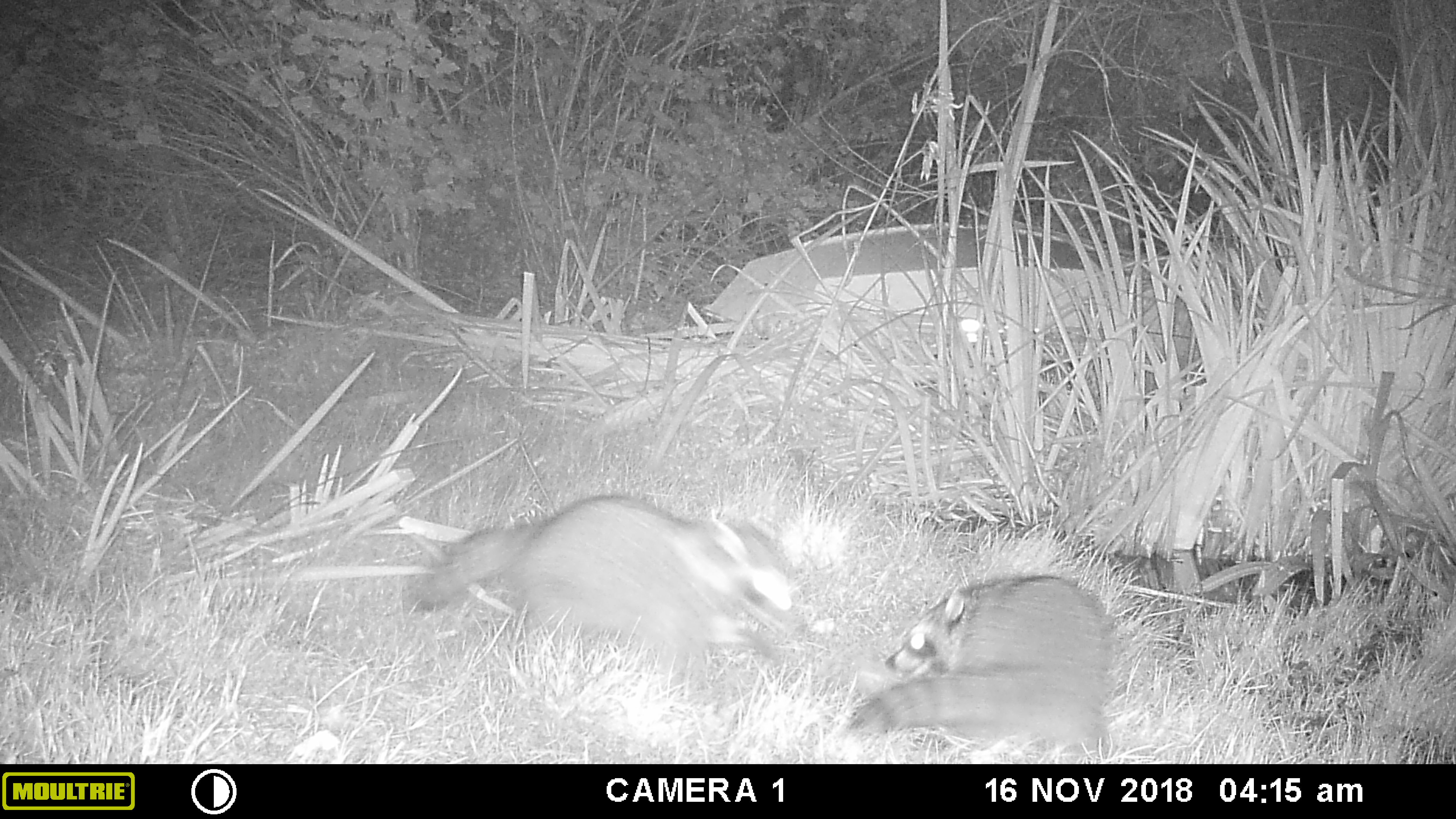Protect Your Plants Without Using Poison
There are simple methods to keeping your plants, food and house safe from rodents without using poison. When you poison a rodent, there is always secondary kill of a predator. That kill is often long and painful. (See my blogpost on mange https://www.vegetariat.com/2022/07/mange-rodenticide-and-a-bobcat-named-daisy/.) Here are multiple ways of keeping animals and insects away from your food and home:
Get rid of debris piles that harbor unwanted critters. This doesn’t mean getting rid of all habitat, just those areas where you see undesirable (to you) animal activity. I see the perfect squirrel palace at half of my consultations in groves: fruit trees spaced apart with no other foliage around, and a pile of cut logs in an open space. You couldn’t build a better squirrel hotel. They burrow under the logs, sit on top to watch for predators, and have open visual lines to the fruit trees. Bury the wood (it fertilizes the ground, sequesters carbon, and holds water https://www.vegetariat.com/2013/02/hugelkultur-irrigating-wood/), and interplant with fragrant low-water-use herbs such as rosemary, sage, oregano and marjoram (don’t plant directly under tropicals or subtropicals because they have shallow roots. Plant outside the dripline. You can plant under stone fruit and apples). The squirrels won’t have a home base, there will be foliage to deter their raids, and these herbs will also attract beneficial native insects to pollinate and eat the bad bugs (Integrated Pest Management) in your grove.
Squirrels decimate your fruit and nut trees? Surround your fruit trees when the fruit is ripe with a temporary boundary of any material that can’t be seen through such as old sheets, sunshade, tarps, canvas and old plastic. It can be 3’ – 4’ tall, with rocks on the bottom of the fabric so there are no gaps. Squirrels want to see where they are going, and also can’t climb the loose fabric. If there is a chance that squirrels can jump from another surface, then make the partition higher. This works very well. I’ve protected an apricot tree that was being decimated by squirrels, both the leaves and fruit, and after the barrier went up all damage stopped. There was an excellent harvest of apricots. Worked the same for some of my plum trees. The barrier can come down after the fruit harvest. Most damage is done in the spring when animals are needing more food for nesting, and when there are hungry young around. Live-trapping and relocating animals is illegal, cruel to the animal, and can transfer diseases to other wild populations. Live trapping and releasing only makes humans feel better. Releasing a scared animal away from its territory, where it doesn’t know the predators, has no home or food cache to run to, has no known water supply, and may be set up on by others of its kind, is cruel. I used to do it until I realized how bad it was. A quick, painless, poison-free death only when absolutely necessary is best.
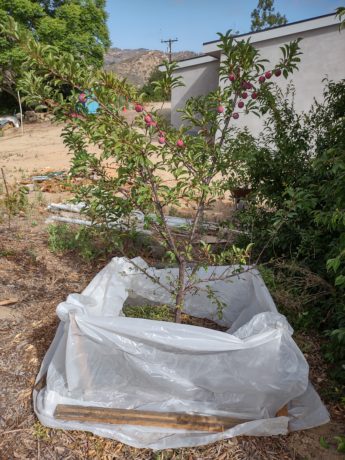
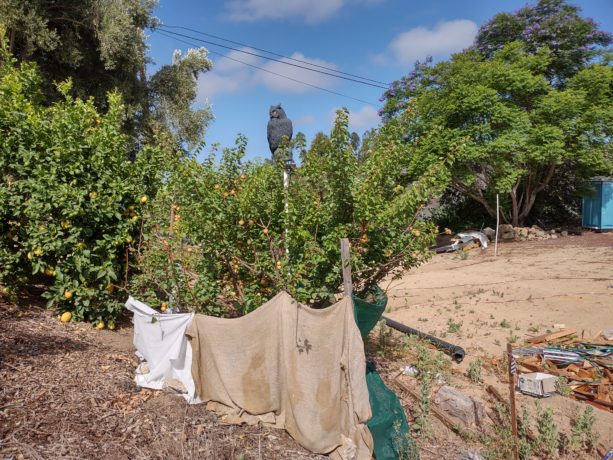
Birds will be put off by staking one of those plastic owls on a tall post right next to your fruit tree (see above photo). Repurposing old CDs and DVDs by tying them on the branches is far better than buying mylar strips which will pollute as they shred. CDs move and flash in the wind, and will also help repel deer and squirrels. These methods WORK. I’ve used them; I’m not just repeating other advice. The owl protected an apple tree from birds completely. I allow 10% of a crop to birds, and after that, up goes the owl.
Rabbits won’t jump high, so a temporary 2’ wire fence around new plantings will keep the bunnies out. When plants are larger they are more resistant to rabbits. You may need to erect a short fence all around your garden rather than individual plants. Some plants are not as yummy to rabbits, but during drought years animals are very hungry and will eat whatever they can to stay alive. Remember this when there are animals in your yard. They live there. They should be there to balance the ecology. Plant and protect accordingly.
Gophers: Surround the root ball of your new plants and trees with wire gopher baskets. Use sturdier hardware cloth for shallow-rooted plants and shrubs, and ½” or ¼” diameter chicken wire around tree roots; older roots can push through the rotting wire. Gophers need to clean their tunnels, so mulching mulch heavily or laying cardboard on the weeds with thick mulch over it (sheet mulching) deters them. When I’ve had particularly nasty gopher problems, I’ve used a Gopher Gasser down the hole closest to the plants. This can kill the gopher quickly underground with little suffering, and it won’t poison anything that may eat it. Or it may just deter the gopher from tunneling around that plant. It works.
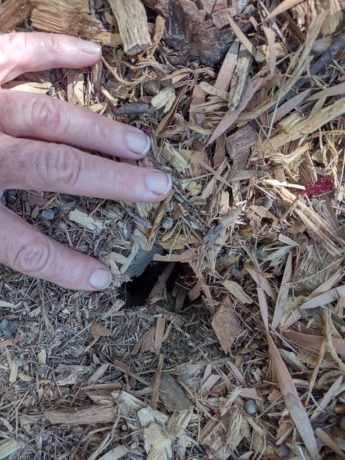
The rats that are a nuisance, mostly Norway and black rats here, are imported by humans and nest anywhere; the native rat won’t eat your plants and lives in brush piles in wooded areas so please let them be. Giving imported rats and mice a quick, humane death (it’s not their fault they are here, its ours!) is best. Use snap traps, and put them along perimeters where they like to run. Cover the traps with milk crates or something to prevent other animals from being injured in them. Peanut butter, cat or dog food, old cooking oil, and peanuts are all reliable baits. Dead unpoisoned rats and mice can be left out to attract predators such as hawks, and they will deal with far more rodents than any poison will.
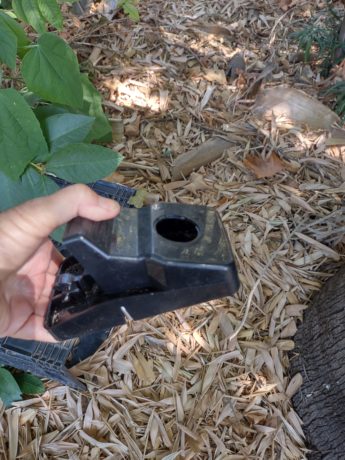
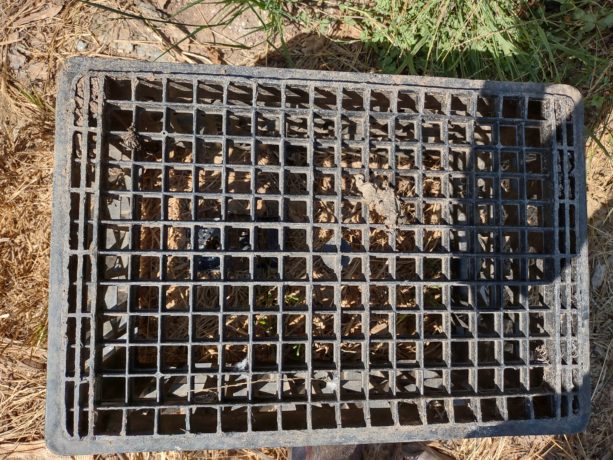
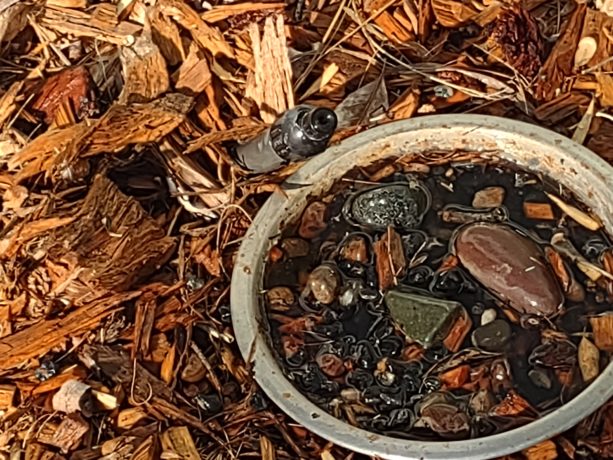
Snakes seek water and warm-blooded animals to eat. If you have bird feeders next to your house, the fallen seed will attract mice and rats, and they will attract snakes. Pans of water set out in your landscape will help provide water, and piles of rocks will provide shade. Remember that snakes are essential for rodent control, and they will die eating a poisoned animals. If you have a fenced area, put snake barrier (wire netting) around the base of the fence and down into the ground. This also keeps bunnies out.
Insects: only a very small percentage of insects are considered ‘harmful’ to humans or crops. Did you know that most species of mosquito only eat pollen, so are pollinators? Yet we don’t want to be bitten and we don’t want our crops decimated, and we don’t want ants in our food. Before you whip out the broad spectrum insecticide – INCLUDING ONES MADE FROM PLANTS – identify the species that you are killing. If you see some bugs on your plant it doesn’t mean that they are killing the plant. With leaf miners you see the damage after the young have tunneled out of the citrus leaves so spraying only kills the beneficial insects, many of which are very small so you hardly see them. Orange oleander aphids on your milkweed? Leave them alone; they aren’t really harming anything. It shows that your milkweed hasn’t been treated with systemic insecticide and won’t poison Monarch butterfly caterpillars. Many of the larvae you see are those of moths and butterflies. If you have a large outbreak of one kind of bug, wait a few days to see if something comes along to eat them. Then usually a strong stream of water will knock them off the plants. If you have to use something stronger, mix a tablespoon or two of mild soap like Dr. Bronners into water and spray that only on the target pest. Check in a week or so to see if you need to reapply. Ladybug larvae look scary. Lacewings set their eggs on thin stalks so ants won’t eat them. Praying mantis egg sacs look like a lumpy growth. Be sure you know what you are attacking. The best method of insect control is to plant a variety of flowering native plants around your garden, keep healthy, mulched soil, don’t overwater, and don’t spray chemicals. Argentine ants are invaders that do a lot of ecological damage and are the ones in your house and farming aphids on your trees. Use bait traps for them (here is a post about them and a recipe for a bait solution: https://www.vegetariat.com/?s=argentine+ants). Having a poison control company spray all around your house may keep you relatively bug-free, but those chemicals can cause convulsions in animals. If you have a dog or cat that will walk over that spray, which is made to last a long time, that animal will lick its paws and can become severely ill. Same with humans who breathe that poison. Using food-grade diatomaceous earth as a barrier works well without poisoning you and your pets.
Deer are rare and beautiful here, and they need to eat green leaves for nutrition. If those leaves belong to your plants or trees, you may not want them close to your house. Design your garden with deer fencing in mind. If fencing is out, then understand that deer don’t like strong smells, sudden movements nor uneven surfaces. Placing rocks (NOT gravel) in a ring out from the dripline of your trees, laying wire mesh on the ground, using those DVDs or CDs tied from the trees, spraying with garlic and hot pepper water, have motion detector lights… all of these are ways to keep them off of your trees and plants without harming them.
Please never use poison. Our wildlife is disappearing rapidly. From 1970 to 2010 the World Wildlife Fund reported that 52% of ALL wildlife on the planet was gone. Over half the population. That percentage has grown in the last twelve years. The whole planet is an epicenter of extinction now, not just certain areas. If you stop using poisons and stop killing native animals and insects, and provide habitat instead, you will have a balanced ecosystem and a haven for the wildlife. If they go, we go.
